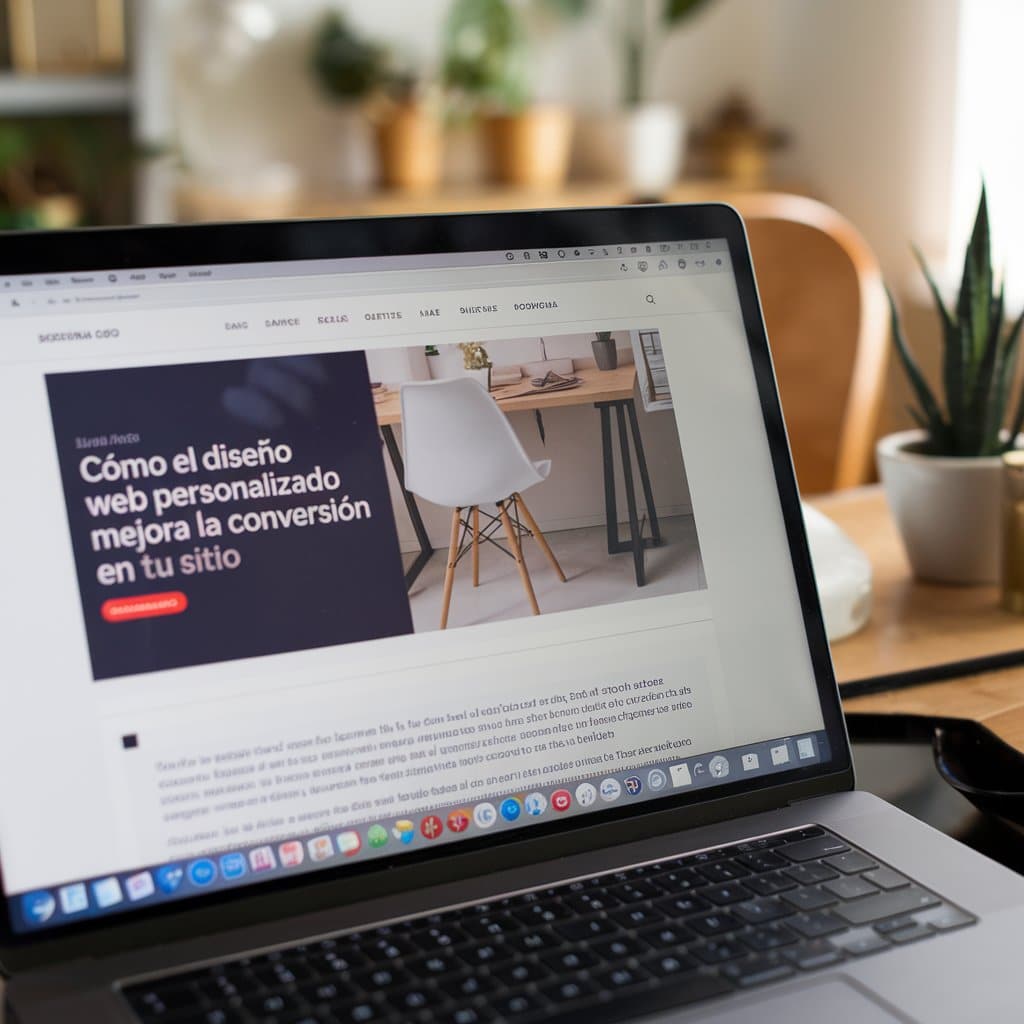In today's competitive digital world, a simple website is not enough.
To stand out and convert occasional visitors into valuable customers, you need a custom web design that is not only attractive, but specifically designed to drive conversions. At Vandelay we understand the critical importance of web design to your success. Below, we'll explain how a custom web design can significantly increase your site's conversion rates.
What is custom web design and why is it so important?
A custom web design is completely tailored to the unique needs of your business and the expectations of your ideal audience. Unlike pre-designed templates, which limit what you can do, a custom design allows you to control every aspect of the user experience - from page structure to visual elements. Here are some of the key conversion benefits:
- Improves the brand awareness
- Increases site speed and performance
- Increases credibility and trust
Tips for maximising conversion with custom web design
1. Optimised responsive design
In a mobile world, responsive design is essential. A custom web design adapts perfectly to all devices, guaranteeing an optimal experience.
- Key statisticsMore than 50% of global web traffic is mobile.
- Implementation CouncilDesign for mobile first and then for desktop. Make sure your site looks and works well on all devices.
2. Strategically placed call-to-action (CTA)
The CTA is the bridge the user crosses to convert. A custom design allows you to play with size, colour, text and placement to maximise conversion.
- Practical exampleBuy now" can be "Get your summer look" in a fashion shop or "Start the digital transformation" in an agency like Vandelay.
- Implementation CouncilUse bold and white space to make the CTA stand out.
3. Optimised conversion forms
Forms are the last hurdle before conversion. A customised design helps you find the balance between getting the necessary information and making the process easy for users.
- Key statistics: Reducing the number of fields in a form from 11 to 4 can increase conversions by 120%.
- Implementation CouncilUse progressive forms, asking for more details as the user progresses through the conversion process.
4. Strategic social proof elements
The social proof (social proof), such as testimonials and reviews, builds trust and increases conversions. A bespoke design allows you to integrate these elements in a natural and effective way.
- CTAPlace specific testimonials next to related products or services, rather than putting them all on a separate page.
- DPUse real photos of your customers alongside testimonials for authenticity.
5. Dynamic personalisation of content
Personalisation based on user behaviour, location or previous purchases can drive conversions.
- DPPersonalisation can increase sales by an average of 19%.
- Implementation CouncilUse tools such as Dynamic Yield or Optimizely to personalise the user experience.
6. Design focused on speed
A fast website improves user experience and conversions.
- Key statistics: A one second delay in loading can reduce conversions by 7%.
- Implementation CouncilOptimise every element of your website so that it loads ultra-fast. Minimise code, use lazy loading and optimise images.
7. Micro-interactions and subtle animations
Well-placed micro-interactions and animations can direct the user's attention to important elements.
- Implementation Council: Use animations purposefully, but avoid overloading the site.
8. Visual storytelling
A customised design allows you to tell your brand story visually, connecting emotionally with visitors.
- Practical exampleUse an interactive timeline to show the evolution of your company or a "Behind the Scenes" section on your work process.
9. Seamless integration of live chat or chatbots
Real-time support can be crucial in guiding users towards conversion.
- Key statistics: Sites with live chat increase their conversion rates by 20%.
- Implementation CouncilIntegrate live chat in an aesthetically pleasing way and have it appear at strategic points in the user's journey.
Implementing a custom web design: Practical Steps
- Know your audience: Conduct extensive research to understand their needs, preferences and pain points.
- Define your conversion goalsDetermine what actions you want users to take, such as purchases, registrations or contact requests.
- Create wireframes and prototypesPlan the structure of your site before going into visual design. Use tools such as Figma or Adobe XD to create interactive prototypes.
- Design for emotion: It takes advantage of the psychology of colour, typography and images to connect emotionally with users.
- Conduct usability tests: Test with real users before launch.
- Implements and optimisesOnce the site is launched, it performs data-driven optimisations.
Measuring the impact of custom web design on conversions
To measure the success of your custom web designmonitors the following indicators:
- Overall conversion rate
- Bounce rate
- Time on site
- Pages per session
- Cart abandonment rate
Tools such as Google Analytics, Hotjar and Crazy Egg will help you analyse how users interact with your website.
In today's competitive digital world, a simple website is not enough.
For highlight y transform occasional visitors into valuable customers, you need a custom web design that is not only attractive, but also specifically designed to maximise conversions. At Vandelay, we understand the crucial importance of effective web design for your success.
Ready to revolutionise your online presence? Contact us today and find out how we can help you create a website that stands out and increases your conversions.

